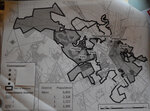Millsboro council tables action on redistricting
It’s back to square one for a redistricting and charter change request in Millsboro.
During Town Council’s Monday meeting, a boundary-redrawing proposal mapped out by the University of Delaware’s Center for Applied Demography & Survey Research, which incorporates the 2020 census, was met with criticism from several members.

You must be a member to read this story.
Join our family of readers for as little as $5 per month and support local, unbiased journalism.
Already a member? Log in to continue. Otherwise, follow the link below to join.
Please log in to continueNeed an account?
|
Millsboro council tables action on redistricting
 By Glenn Rolfe
By Glenn RolfeMILLSBORO — It’s back to square one for a redistricting and charter change request.
During Town Council’s Monday meeting, a boundary-redrawing proposal mapped out by the University of Delaware’s Center for Applied Demography & Survey Research, which incorporates the 2020 census, was met with criticism from several members.
“This makes no sense to me whatsoever,” Councilman Marty Presley said. “We could have accomplished this with the council in about 15 minutes. ... All they did was take a ruler and chop off a few houses. This is obsolete already.”
Due to the opposition, council unanimously opted to table the issue, pending an appearance by a consultant from the center at a July 1 meeting. The town has been working with consultant John Laznik from the university.
In addition, town administration is reaching out to the Delaware General Assembly to see if a census generated at the municipal level would be acceptable for a charter change, as opposed to the U.S. census, which is typically used for redistricting.
“The prevailing language in everything that I have looked at in the state of Delaware — and even beyond as much as I could (see) — is that the federal census every 10 years is the primary basis for most redistrict change or reapportionment efforts,” said town solicitor Mary Schrider-Fox.
Town manager Jamie Burk added, “We want to make sure it gets there in an efficient manner, and we want to follow what is a typical norm for the Delaware state legislature.”
In early January, Millsboro contracted with the Center for Applied Demography & Survey Research to conduct a study and offer redistricting recommendations.
Currently, Millsboro Town Council consists of seven members — two from each of three districts and one at-large representative.
But the entity and town staff have been grappling with a redistricting issue since 2023, in hopes of addressing a housing development boom — most notably in District 3’s Plantation Lakes — and an imbalance in district representation.
In its request, council members sought advice about a possible expansion to more than three districts and suggestions about at-large districts.
But what council received was a map with redesigned boundaries.
“My first thought when I saw this was, if I was looking for an illustrative example of gerrymandering, this fits,” Councilwoman Kimberley Kaan said.
Assistant town manager Ashleigh Sander, however, said the maps are “just the start.”
“This is the proposal that they gave as an initial proposal for council to start deliberating and discussing and go from there.”
The center’s draft, based on 2020 census data, lists the town’s population at 6,855. The revised boundaries put District 1 at 2,328 people, District 2 at 2,222 and District 3 at 2,305.
In response, Councilman Presley pointed out that Plantation Lakes, where he resides, has about 2,300 homes in the north and central sections, with another 756 planned for the south portion. Combined, the north and central sections put the neighborhood’s occupancy at about 5,000 residents or more, he said.
“This is so far out of whack it is a complete waste of time,” he continued. “Why would we approve something that we know, when we are passing it, ... is categorically wrong? One district has more than half of your population but less than a third of the representation. There has got to be some type of alternative that we can use.”
Mr. Burk also noted that, about eight years ago, council ended the town’s capitation tax, a gauge that could have been used to tabulate the current population, four years following the census.
Redistricting is viewed as a prelude to a contentious in-district voting proposal pitched by outgoing Mayor Jim Kells, whose last meeting was this week. The issue was narrowly tabled 4-3 at the January meeting, put on hold until the town reviews the recommendations from the university.
Members and subscribers make this story possible.
You can help support non-partisan, community journalism.
Other items that may interest you









